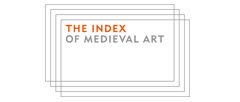ScholarWorks > Arts & Sciences > Medieval Institute Publications > STUDIES_IN_ICONOGRAPHY > Vol. 43 (2022)
Abstract
THE DESCRIPTION OF GIORGIONE’S Tempest (ca. 1507) written by the Venetian nobleman and art enthusiast Marcantonio Michiel in 1530 has played a fundamental role in nearly all attempts to interpret the picture’s puzzling iconography, but its implications have not been fully understood. This article analyzes Michiel’s words in light of his life history and his larger project of recording information about works of art, his handwritten notes later published under the title Notizia d’opere di disegno (1800). Much to scholars’ consternation Michiel did not unequivocally identify the subject of Giorgione’s painting, but he did interpret its poetic mood. Specifically, his syntax and words reveal that he perceived a sense of disquiet, even potential tumult, in the picture. His account further suggests that he responded to the scene not as if it were a narrative, but rather in the vein of an allegory, or more precisely, an impresa. This observation, together with the picture’s composition, proportion, scale, and inventive use of imagery, highlights the Tempest’s resemblance to a relatively new type of painting, the portrait back or cover. While it is not possible to verify that Giorgione painted the Tempest as a canvas cover (called a timpano), I argue that “portrait adjacent imagery” impacted Giorgione’s invention. I also demonstrate that the painting’s earliest known owner, Gabriele Vendramin, was an avid collector and patron of painting covers in various media. Seeing the Tempest in relation to the contemporary culture of imprese and painting backs and covers frees us from looking for a definitive solution to the “iconographic problem.” Instead, it allows us to comprehend the imaginative, idiosyncratic, and open-ended imagery as a means to contemplate personal and philosophical ideals concerning the regulation and cultivation of the self.
Recommended Citation
Schmitter, Monika
(2022)
"Describing Giorgione’s Tempest: Iconography, Genre, Interpretation,"
Studies in Iconography: Vol. 43, Article 7.
Available at:
https://scholarworks.wmich.edu/studies_in_iconography/vol43/iss1/7


